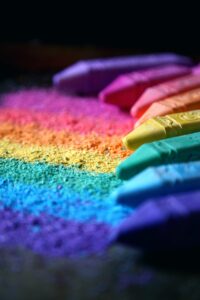Graffiti, the bold work of street artists, is no longer considered vandalism and has moved into the realm of art. People travel to other cities and countries to see examples of creative street art. And the grey monotony of bedroom communities literally demands colours! Graffiti on the wall in the flat is an indicator of a broad outlook, non-trivial taste and bright individuality of the owners, such as italian murals for walls.

Graffiti culture origins
The names of contemporary graffiti artists – Banksy, Keith Haring and others – are on a par with the world’s most famous artists. It all started in the streets, where graffiti (from Italian “graffito” – “scratched”) served as a kind of tag, a way to make a statement among young people.
Simple writings with names, symbols or names of street groups gradually turned into canvases. Graffiti artists are talented in expressing their ideas on the walls of their hometowns and their works often have deep social, cultural and political connotations.
This is how the graffiti subculture assimilates into contemporary realities, while retaining its rebellious spirit.
Trends are such that interior and exterior are converging and mixing with each other. Materials and techniques of street design are entering the room, taking on new meanings and forms.
Not surprisingly, graffiti is not left out. It’s hard to imagine a home without some kind of wall decoration, be it paintings, photographs or murals. Graffiti in the interior is definitely a bold decision, and for many it is an ambiguous one. But it has its own advantages and features that make street art a stylish addition to modern flat design.
Peculiarities of graffiti in the flat interior
Traditional graffiti is catchy coloured images: inscriptions, grotesque images, stylised portraits, various figures. They have clear contours and a distinct volume.
There are many styles of graffiti, just like traditional painting. Depending on the purpose of the room and the overall design, the colours, style and subject matter of the graffiti are chosen.
The 5 pluses of graffiti in the interior:
– Graffiti can be applied to different surfaces: paint, brick, plaster
– The painting on the wall masks irregularities, scratches and other flaws
– Using graffiti to set the mood of the room, add bright accents and flavour to the interior
– a certain positioning of the picture allows to zone the space, for example, to separate the recreation zone from the work area
– Large prints visually expand the space without taking up any physical space.
Of course, a whole room full of graffiti pictures would be better suited for themed places. In a flat you can place your graffiti tags locally on a wall, bed headboard, table or sofa.
As graffiti is a self-contained piece of art, it should not be added to or overlaid with furniture.
As for interior styles, graffiti is ideal for high-tech, minimalism, loft and other industrial trends. This design has many references to the urban environment, street culture and technical progress. And brick and concrete walls serve as a logical backdrop for a mural!




